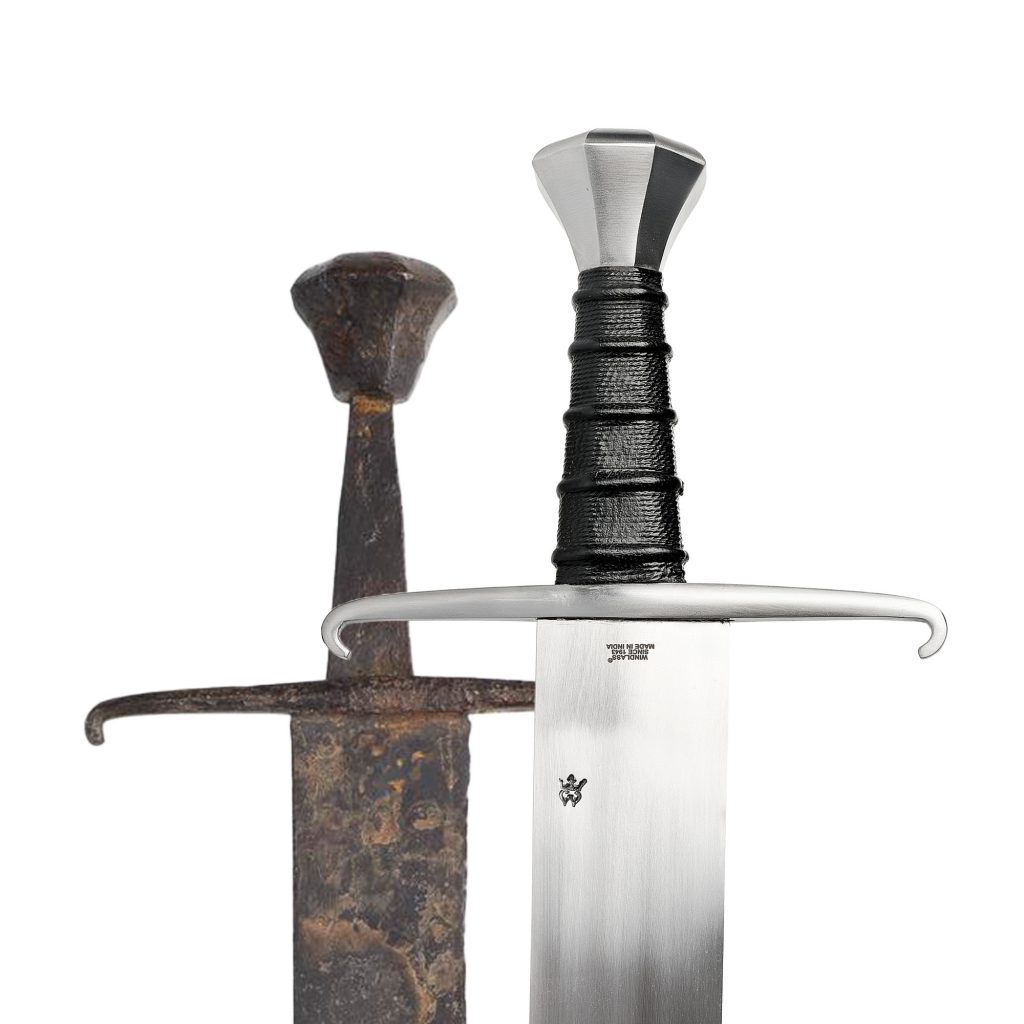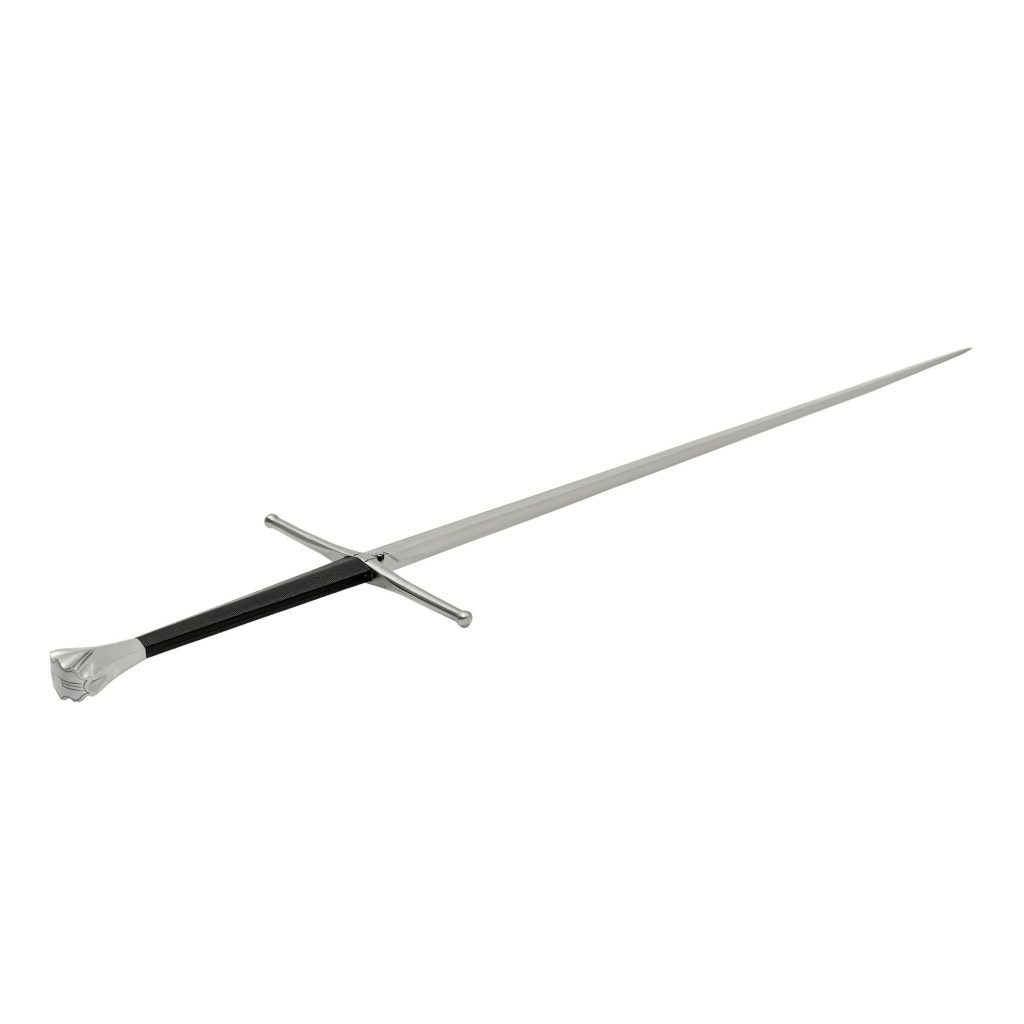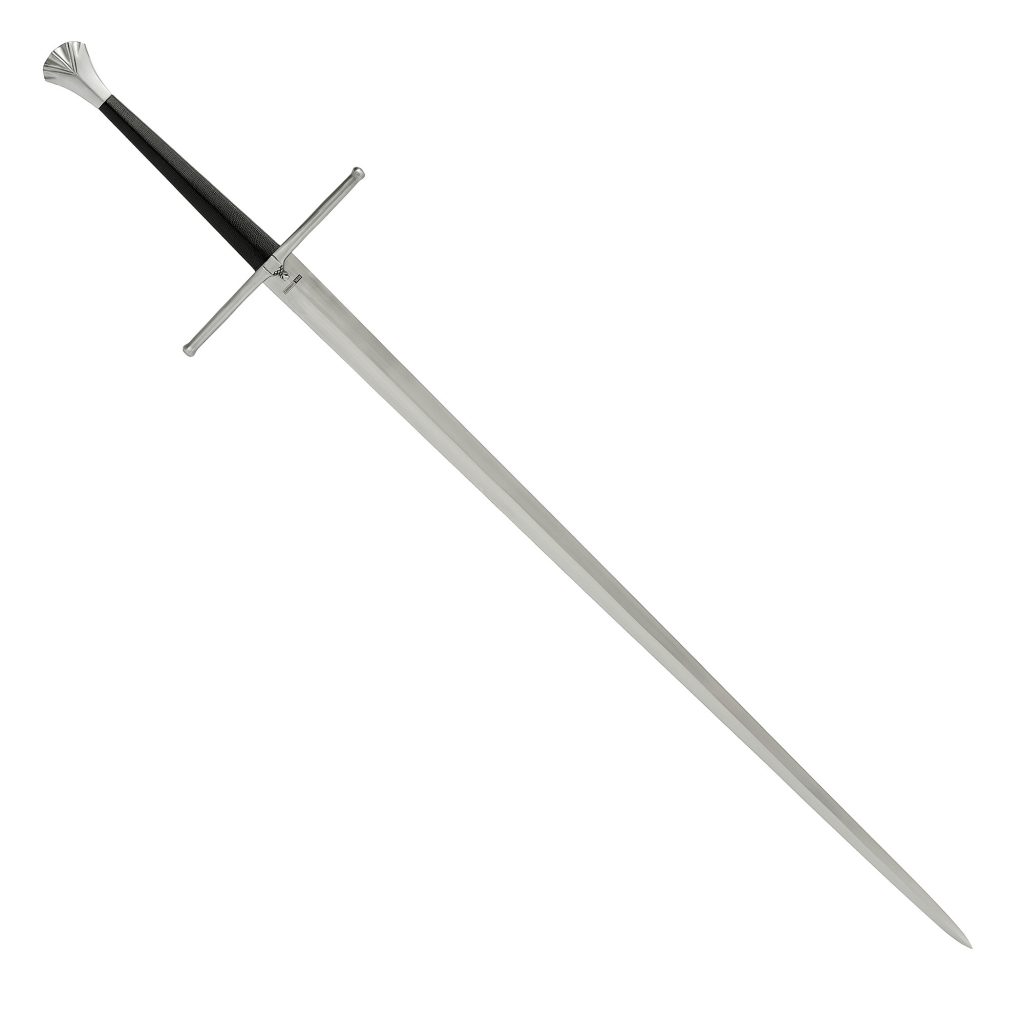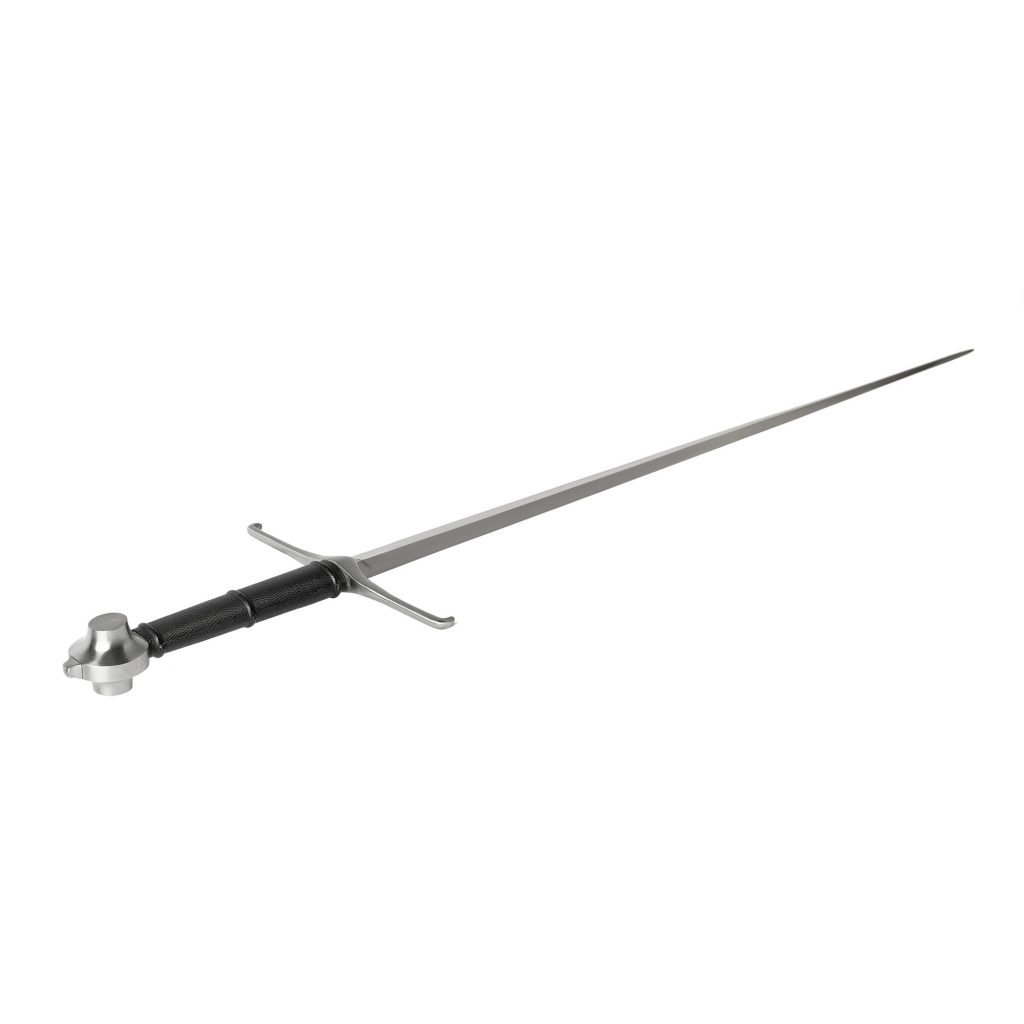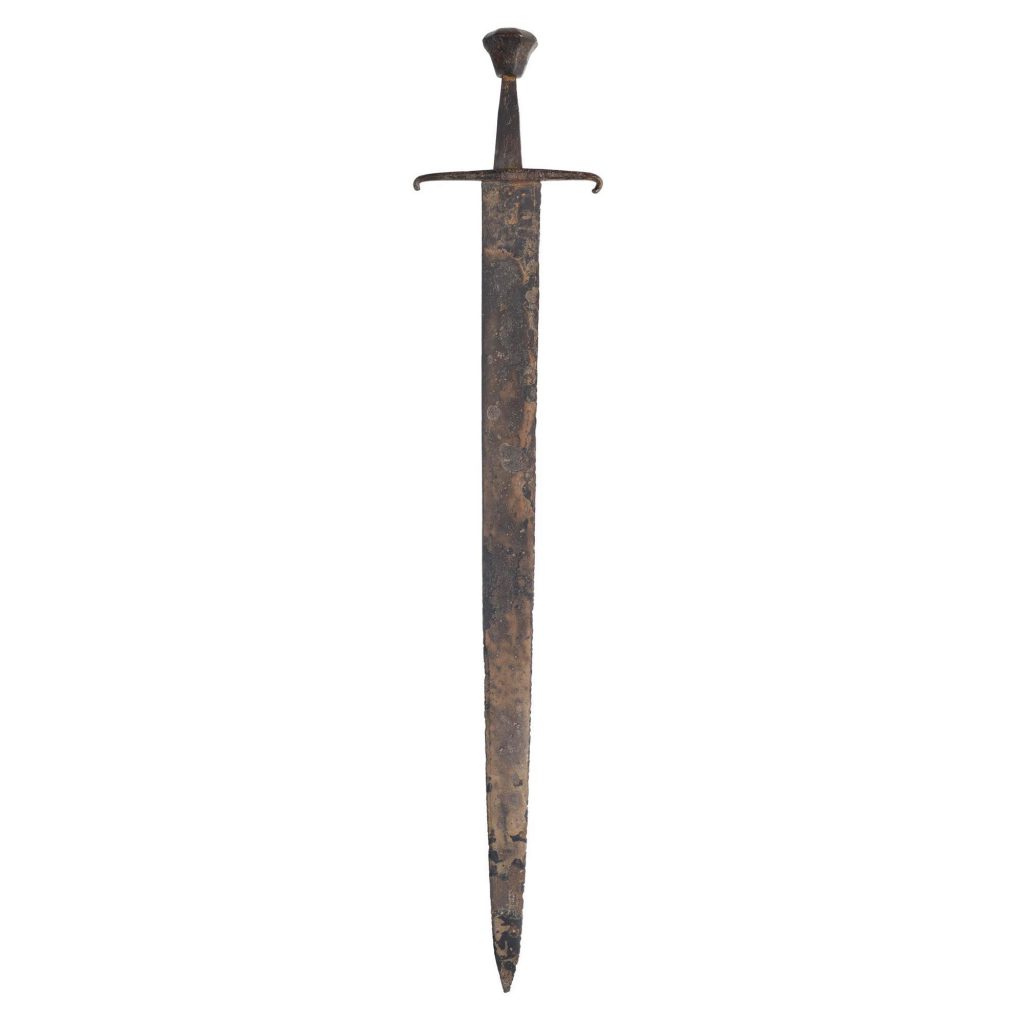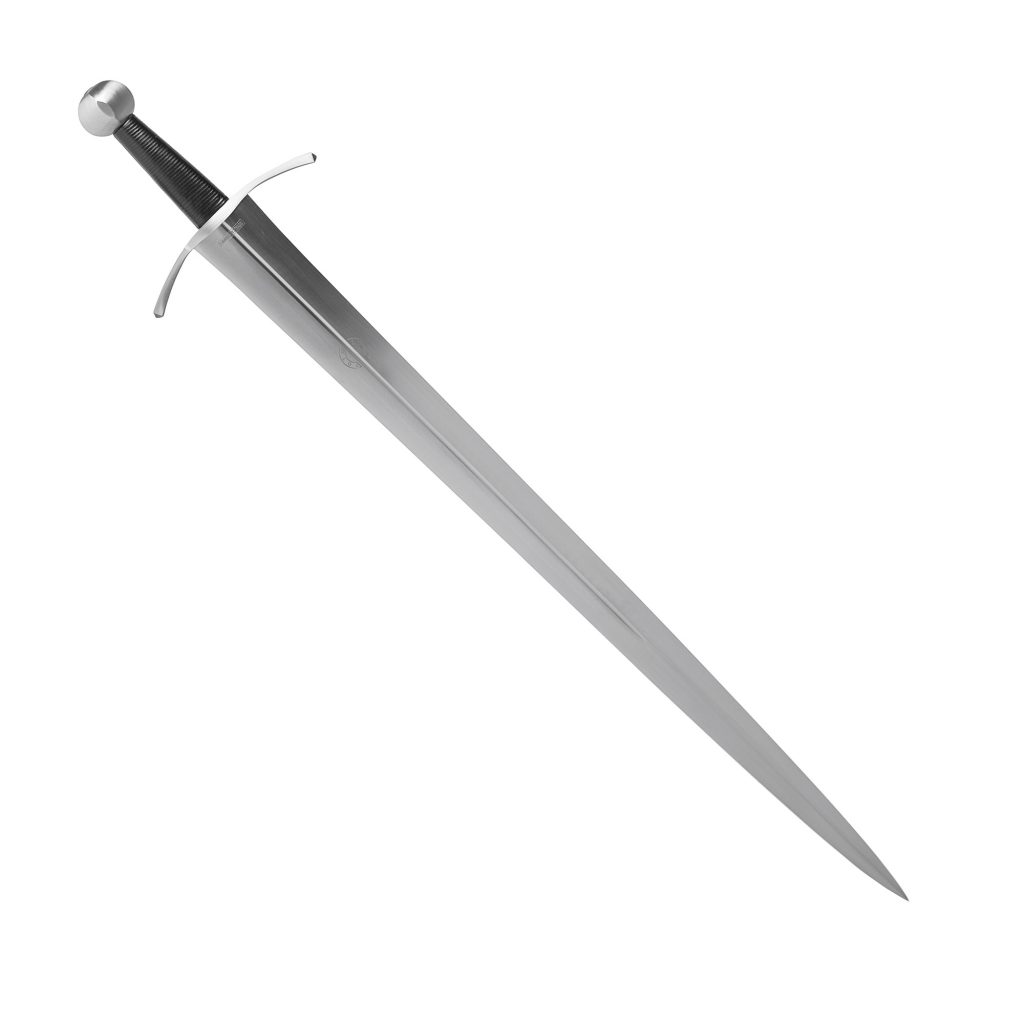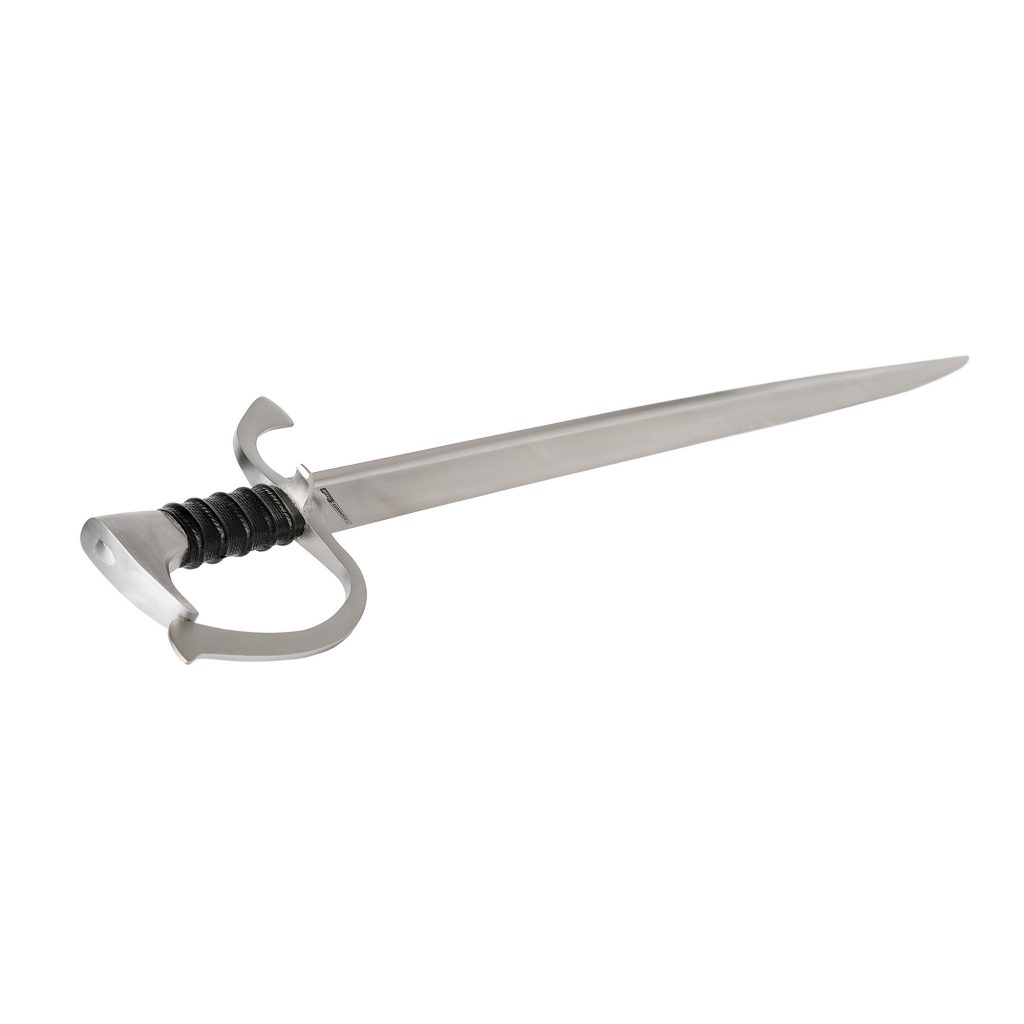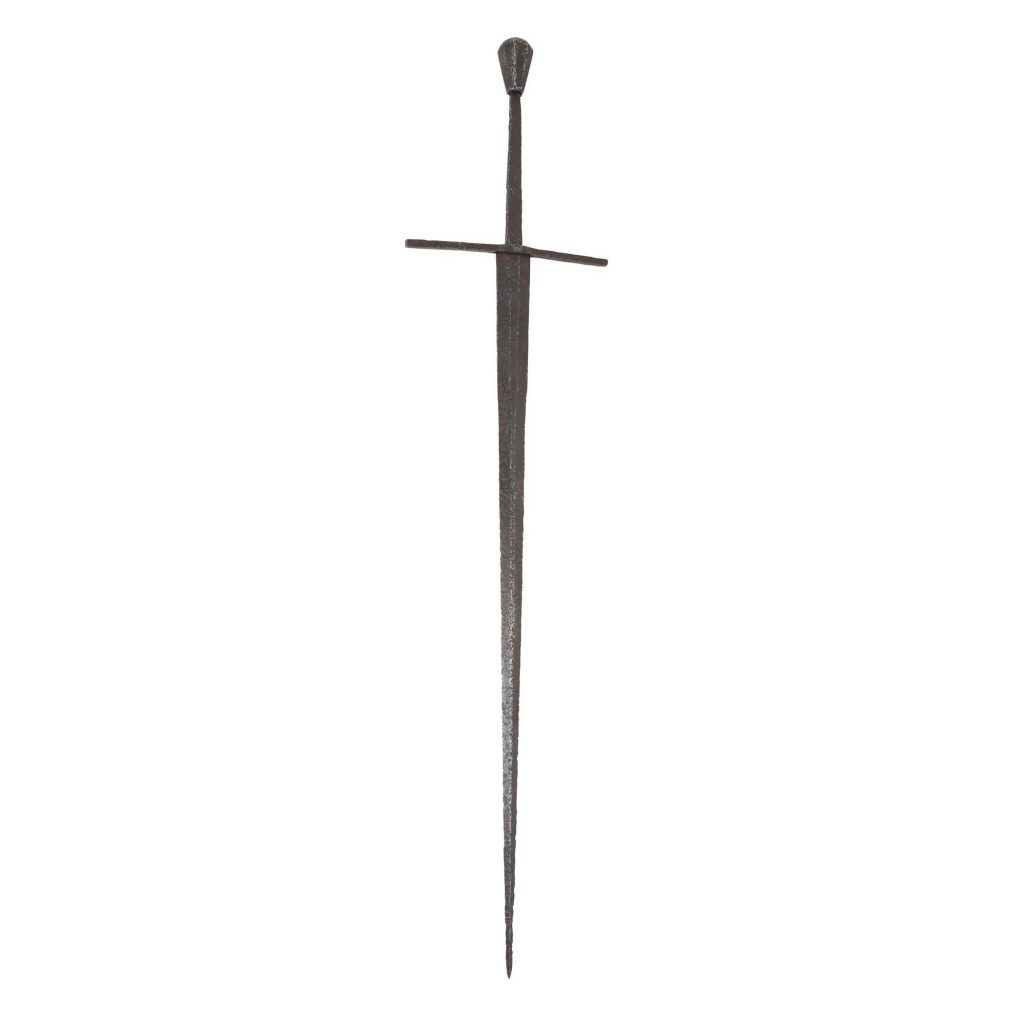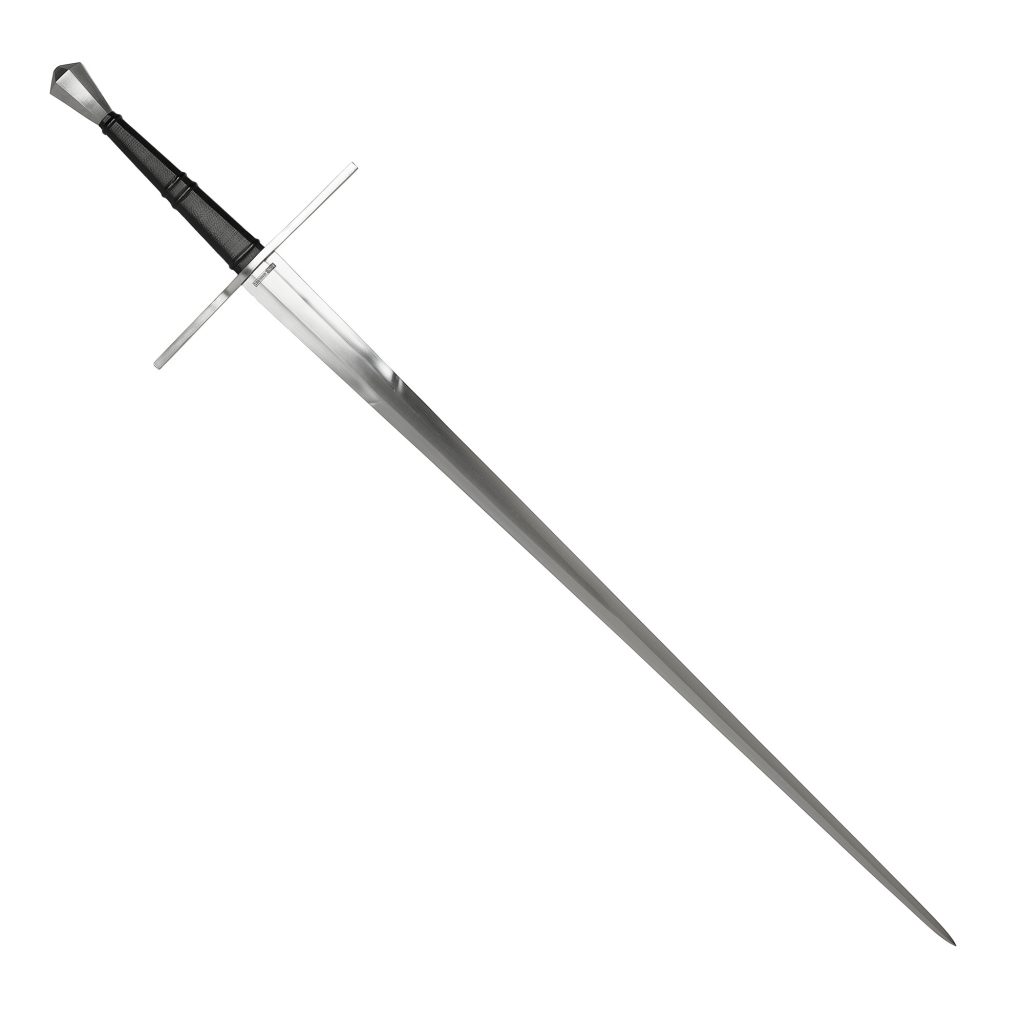History brought to life
Royal Armouries together with Windlass Steelcrafts have created an exciting new range of historically accurate replica swords, based on original artefacts in the Royal Armouries collection. Using the finest steel and materials, forged by the most skilled craftsmen, the Windlass Sword Collection is truly history brought to life. Every aspect of the original artefact has been considered in production, to deliver the most authentic experience. Whether it be the weight, proportion or feeling in the hand, the Windlass Collection Swords are replicas in a class of their own.
Jack Wanstall, Partnerships Manager at the Royal Armouries said ‘This unique range of replica swords have been expertly created, based on meticulous study of the original weapons. Each item has been carefully prototyped and then thoroughly inspected side-by-side with the historical originals to ensure the specifications match.'
Windlass came to us with a vision of allowing people to own a piece of history. Achieving correct reproductions of the look, weight and feel of swords from different historical eras was a key goal for them from the outset. Windlass enlisted the help of renowned historical weapons expert Matt Easton to support their ambitious project, and along with guidance from Henry Yallop, Royal Armouries Keeper of Edged Weapons & Armour, this expertise ensured that the results are mightily impressive.'
Introducing six replica swords
Royal Armouries 15th Century Two-Handed Sword
The original
Royal Armouries IX.1787. This is a replica of a mid-15th century two-handed sword. The original sword is believed to have been excavated in France, from a ford near the site of the Battle of Castillon in 1453 – the last battle of the Hundred Years’ War. It
was purchased by the Royal Armouries in 1978 and is one of an important archaeological group of over eighty swords discovered in the same spot
The history
The sword has been suggested to be distinct English style of mid -15th century two-handed swords. Featuring a fish-tail pommel, straight guard with swollen terminals, and double-edged blade having a flattened-diamond cross-section. The sword is a versatile cut and thrust type.
The detail
The detail: This is a replica of Royal Armouries IX.1787
Overall length: 58.0” (147.32 cm)
Guard width: 11.38” (28.91 cm)
Blade length: 45.0” (114.3 cm)
Blade width at ricasso: 2.0” (5.08 cm)
Blade is double edged and distally tapered: 0.34” (0.86 cm) thick at guard, 0.17” (0.43 cm) at tip
Weight: 4.63 lb / 2.097 kg
The original, designated as IX.1106 by the Royal Armouries is a mid14th-century longsword, found in Lake Constance, where Austria, Germany and Switzerland meet.
The history
This sword features a stiff tapered blade, which is double-edged and straight, with an acute tip. It has a hand-and-a-half hilt, which could be used one or two-handed, and a wheel pommel. The blade is of a simple flattened diamond cross-section, but the pommel has some complex and subtle shaping, with the front and back planes uniquely canted inward at the top.
Swords of this type are not uncommon, and several survive in various collections.This type of sword may have been used by armoured men-at-arms and knights, usually one-handed on horseback or two-handed on foot. Swords like this were used in Europe in the second half of the 14th century and would likely have been familiar to fencing masters like Fiore dei Liberi and used at battles like Sempach in 1386. This sword seems quite specialised to armoured combat and halfswording (gripping the blade with one hand), due to the notable stiffness and mass of the blade. The edge
geometry is quite obtuse, but the blade has a lot of presence in the strike. Equally, the weighty pommel could be used with good effect to strike in close combat.
The detail:
This is a replica of Royal Armouries IX.1106
Overall length: 44.0” (111.76 cm)
Blade length: 34.5” (87.63 cm)
Guard width: 10.25” (26.04 cm)
Blade width at ricasso: 1.75” (4.45 cm)
Blade is double edged and distally tapered: 0.44” (1.11 cm) thick at guard, 0.22” (0.56 cm) at tip
Weight: 4.13 lb (1.871 k
Royal Armouries Single-Edged Arming Sword
The original
Royal Armouries IX.2638 – A single-edged arming sword of the mid-15th century, reputed to come from the river near the site of the Battle of Castillon (1453) and purchased by the Royal Armouries in 1984.
The history
Over 80 swords, are said to have been recovered from the archaeological find, however, this sword is without direct comparison in that group, having a distinctive hilt and unusual single-edged blade. At first sight it looks like a regular double-edged arming sword with a central tip, but on closer inspection it has a single-edged blade, of wedge cross-section, having a false edge on the back of the blade near the tip. The blade is remarkably wide and thin, with a very acute edge geometry leading to a fine edge. The quillons end in curled tips which could help to retain an opponent’s blade, the asymmetrical grip is found towards the back edge, and the squat scent-stopper pommel makes the short grip comfortable to hold.
This sword feels very nimble, and it is deceptively light compared to its width, due to the thinness of the blade and distal taper. While it could thrust effectively against unarmoured targets, it seems to be perfected for cutting, the tip being broader and the blade more flexible than a typical arming sword of the time.
The detail:
This is a replica of Royal Armouries IX.2638
Overall length: 37.0” (93.98 cm)
Blade length: 31.25” (79.38 cm)
Guard width: 7.38” (18.75 cm)
Blade width at ricasso: 2.38” (6.04 cm)
The blade is single edged and distally tapered: 0.16” (0.40 cm) thick at guard, 0.09” (0.23 cm) at tip
Weight: 2.94 lb (1.332 kg)
Royal Armouries IX.2141, 14th century – reputedly found in a peat bog together with another now in Rome and is unusually well preserved. Comparable swords have been found across much of Europe.
The history
The pommel of this sword looks conventional when viewed dead-on, but turn the sword sideways and an unusual, somewhat conical shape reveals itself. One-handed arming swords were carried as sidearms by many people at the time, often used with a shield or buckler.
This type of sword could have been carried at the beginning of the Hundred Years War, and this particular example features several distinctive features. The subtly shaped crossguard curves towards the blade, tapering and then swelling at the terminals, and the distinctive pommel has very particular angles and facets. The hilt sits very comfortably in the hand. The broad leaf-like straight blade is of a flattened-diamond cross-section, double-edged, with a narrow fuller to reduce mass. The width swells slightly where it meets the hilt and the gracefully curved edges finish in an acute thrusting tip. The sword is quite light for the size but has a lot of blade presence and power in the hand, being very well suited to give impressive cuts and thrusts.
The detail:
This is a replica of Royal Armouries IX.2141
Overall length: 38.18” (97 cm)
Blade length: 33.46” (85 cm)
Guard width: 7.38” (18.74 cm)
Blade width at ricasso: 2.50” (6.35 cm)
Blade is double edged and distally tapered: 0.22” (0.56 cm) thick at guard, 0.13” (0.33 cm) at tip
Weight: 2.69 lb (1.219 kg)
Royal Armouries 15th Century Falchion
The original
Royal Armouries IX.144, has resided in the Royal Armouries collection since before 1916 and its exact origin before that is unknown, but it is part of a group of similar swords with English provenance.
The history
This family of swords, sometimes known as ‘Wakefield - type’ hangers, (after one of the group, ‘The Wakefield sword’, being found near the site of the Battle of Wakefield, 1460), often feature beaked pommels and S-shaped hand guards. Some have an added side bar or lug on the guard, as seen in this example. (Note: the lug on the original had been damaged and is bent, meaning it pokes into the hand, which has been rectified in this reproduction).
These type of short swords were popular sidearms for billmen and archers during the Wars of the Roses and into the early Tudor period. Swords similar to this could have seen action in battles like Wakefield, Towton, Barnet, Tewkesbury and Bosworth. This
example features a deceptively complex and challenging single-edge blade, with subtle transitions of cross-section and clever hollow grinding and a fuller to make it lighter. It has a graceful hollow ground front edge and a slender but strong point. The hilt provides a good level of hand protection for the time, for soldiers who were not generally wearing gauntlets.
The detail:
This replica is a reproduction of Royal Armouries IX.144
Overall length: 32.0” (81.28 cm)
Blade length: 27.25” (69.22 cm)
Guard width: 6.06” (15.39 cm)
Blade width at ricasso: 1.50” (3.81 cm)
The blade is single edged and distally tapered: 0.25” (0.64 cm) thick at guard, 0.06” (0.15 cm) at tip
Weight: 1.94 lb (0.878 kg
Royal Armouries 15th Century European Long Sword
The original
Royal Armouries 15th Century European Long Sword
The original
Royal Armouries IX.16. This is a reproduction of an early 15th century longsword, believed to have been found in the river Thames before finding its way into the Royal Armouries collection.
The history
Dating to around 1400-30, this sword features a two-handed hilt with scent-stopper pommel. The stiff and acutely tapered blade ends in a robust but slender point. This type of sword was used in one or two hands, depending on circumstance, and in armoured combat the blade could also be gripped in halfswording, to better drive the point into the gaps of an armoured opponent, and to use the crossguard and pommel for wrestling and striking.
Similar types of sword would have been carried at the time of Agincourt (1415). The blade of this sword has three transitions, from a hollow ground blunt ricasso next to the guard, to a hexagonal cross-section and finally to the flattened diamond section point. This sword strikes with authority, despite the narrow appearance. This is due to the surprisingly thick section for most of the length of the blade, making it very stiff, and ideally suited to halfswording and thrusting into things like mail voiders at the armpits of an enemy’s armour. A relatively nimble sword, but with more blade presence than you might expect.
The detail:
This is a replica of Royal Armouries IX.16
Overall length: 46.50” (118.11 cm)
Blade length: 36.50” (92.71 cm)
Guard width: 10.17” (25.83 cm)
Blade width at ricasso: 1.75” (4.45 cm)
The blade is double edged and distally tapered: 0.31” (0.78 cm) thick at guard, 0.20” (0.51 cm) at tip.
Weight: 3.38 lb (1.530 kg)
Certificate of authenticity
Each replica sword from the Windlass X Royal Armouries Collection comes with a certificate of authenticity as an officially certified replica, a tin of Windlass Classic Wax and a polishing cloth.
All the swords have been crafted with exceptional blades, hand-forged by a skilled blacksmith using modern 1080 high carbon steel that is fully tempered and distally tapered for proper weight distribution. The sheaths have been made with a wood body covered with leather. The tip is reinforced with a brass chape that features a traditional cut-out. At the throat, the leather extends upward and covers part of the guard at the ricasso.
Henry Yallop, Royal Armouries Keeper of Edged Weapons & Armour said, ‘this selection of replicas allows the Royal Armouries collection to be accessible to a greater range of people who can get a realistic ‘feel’ for what important examples of genuine objects may have looked and felt like ‘in hand’ during their period of use.’


Work with us
If you would like to work with Royal Armouries and bring a touch of history to your products, contact our Licensing team directly: licensing@armouries.org.uk




